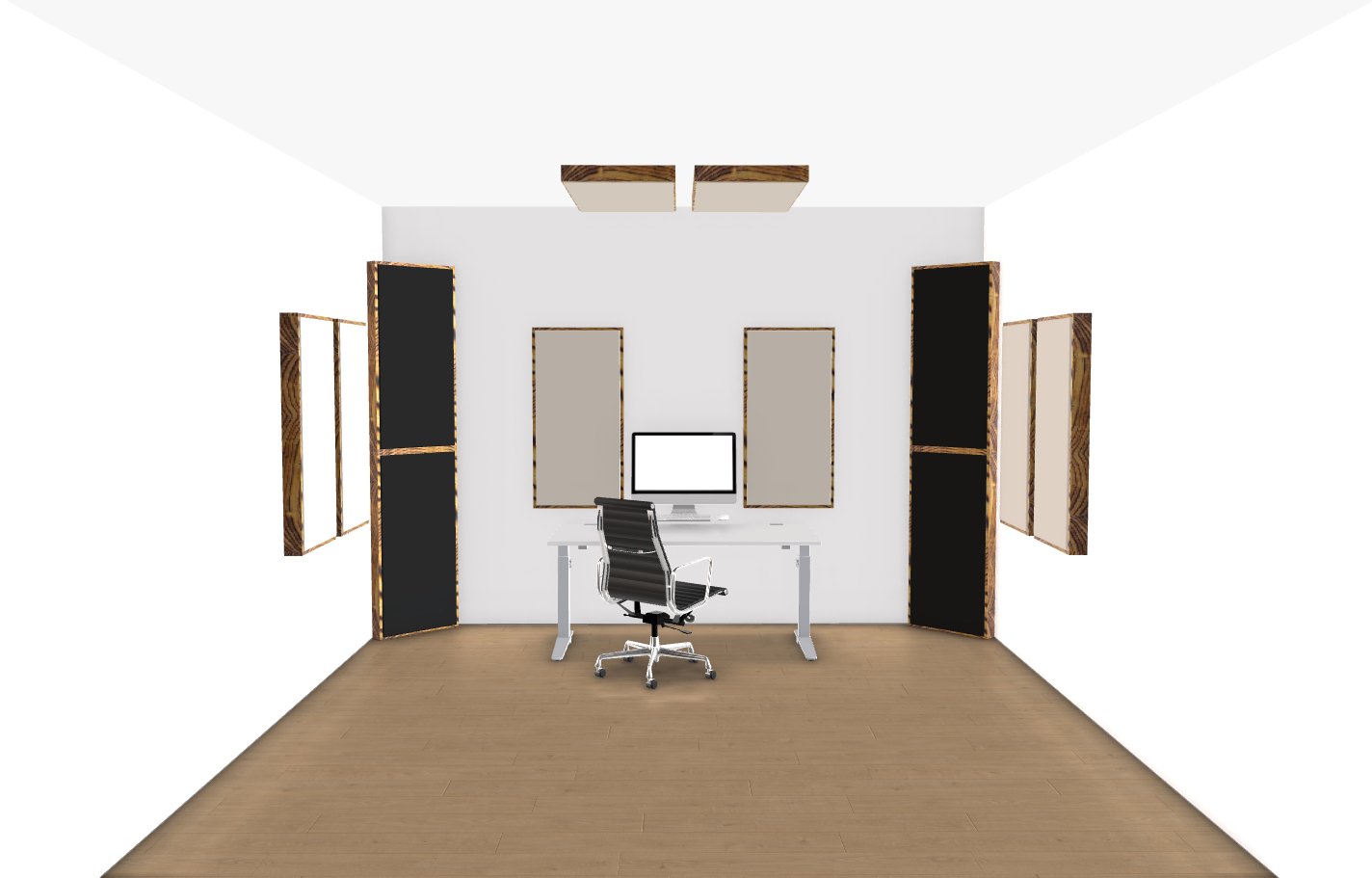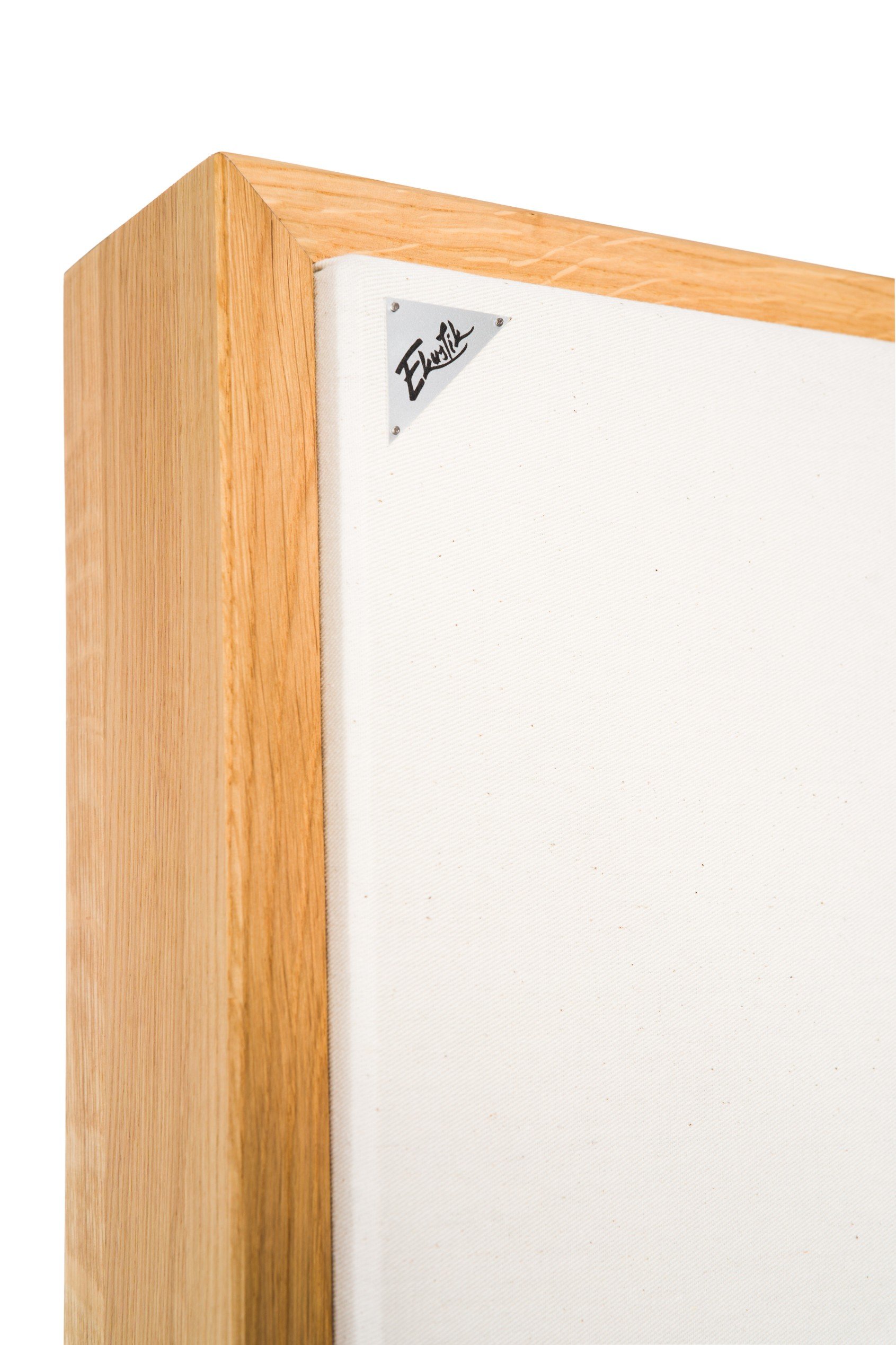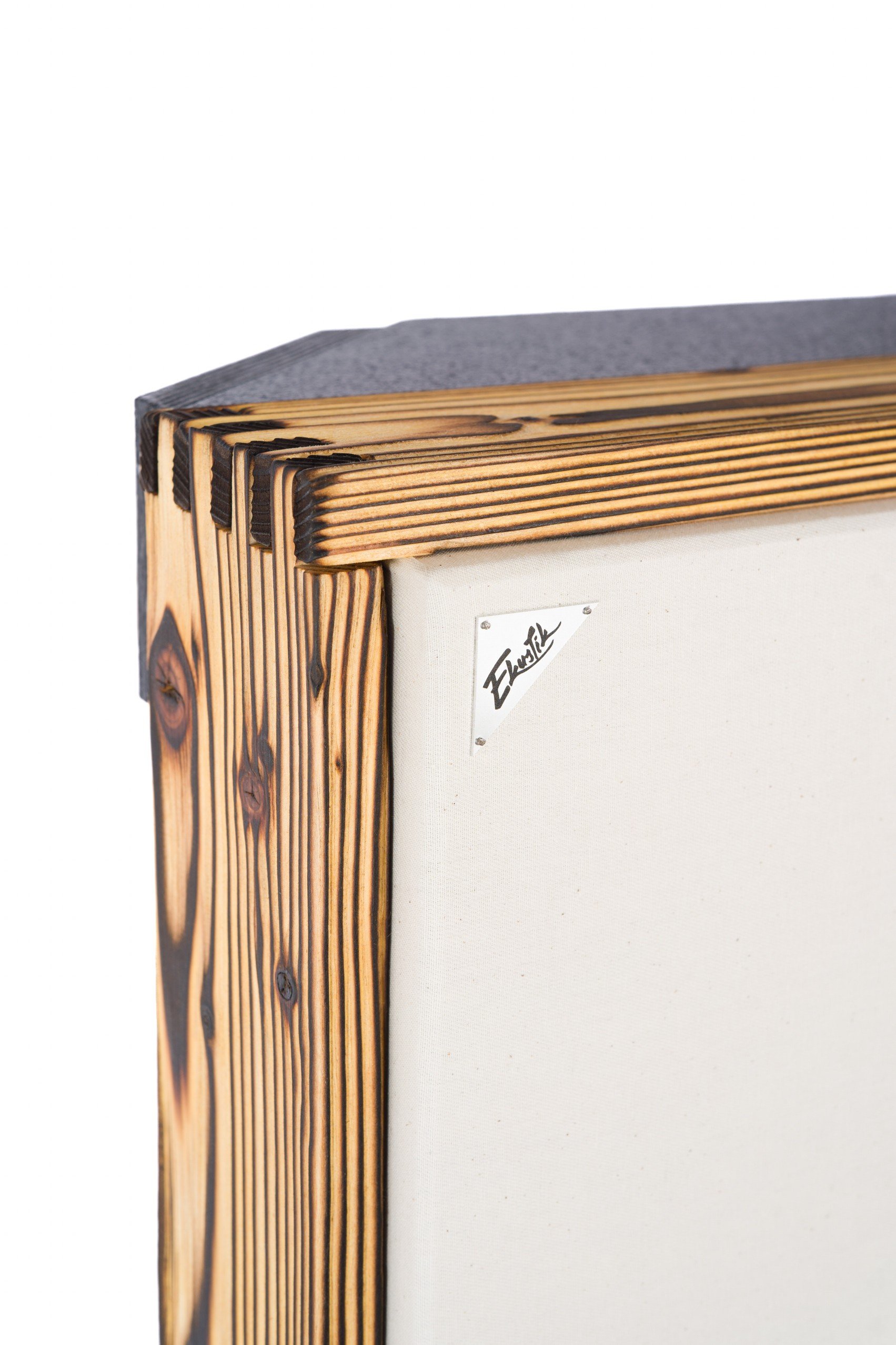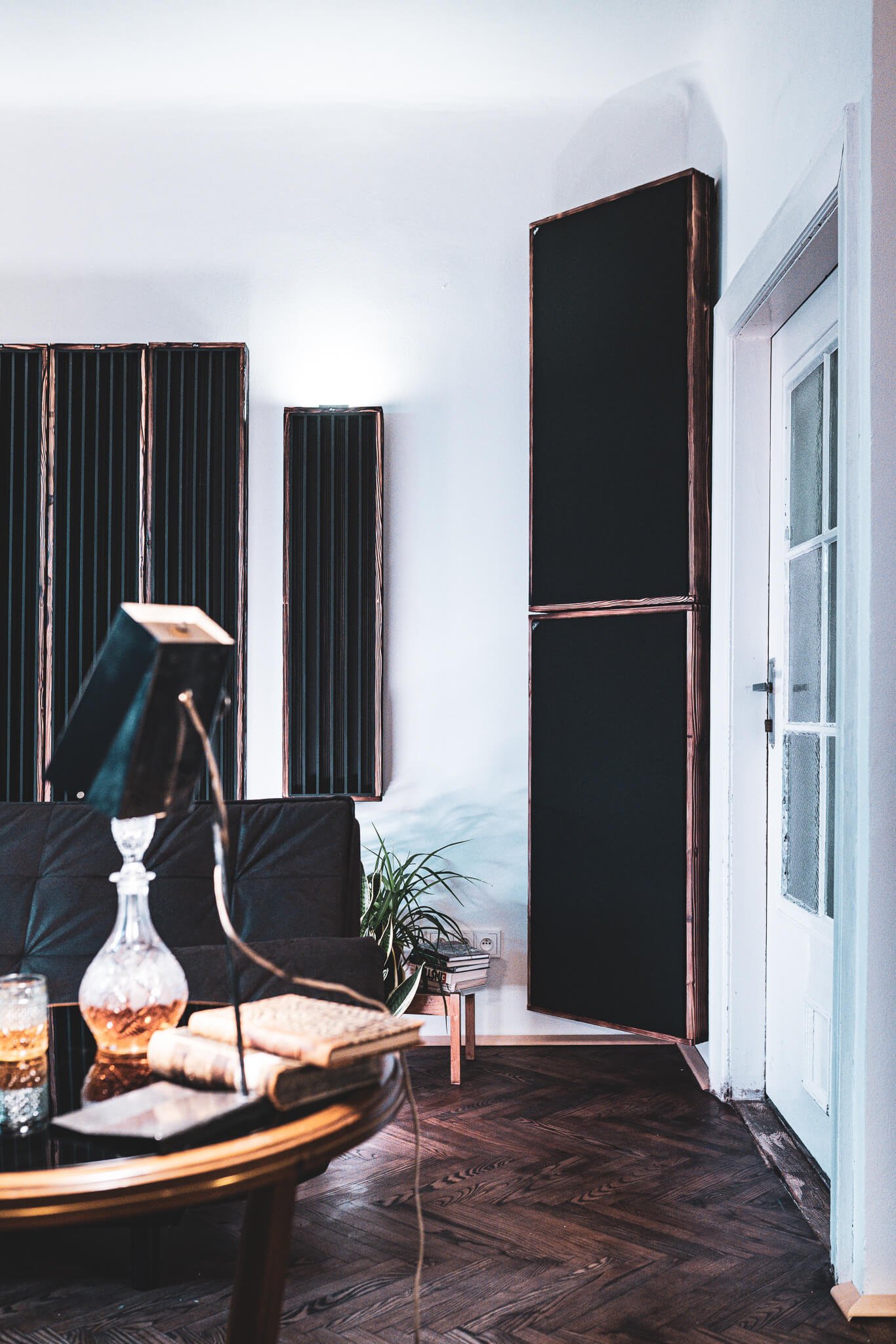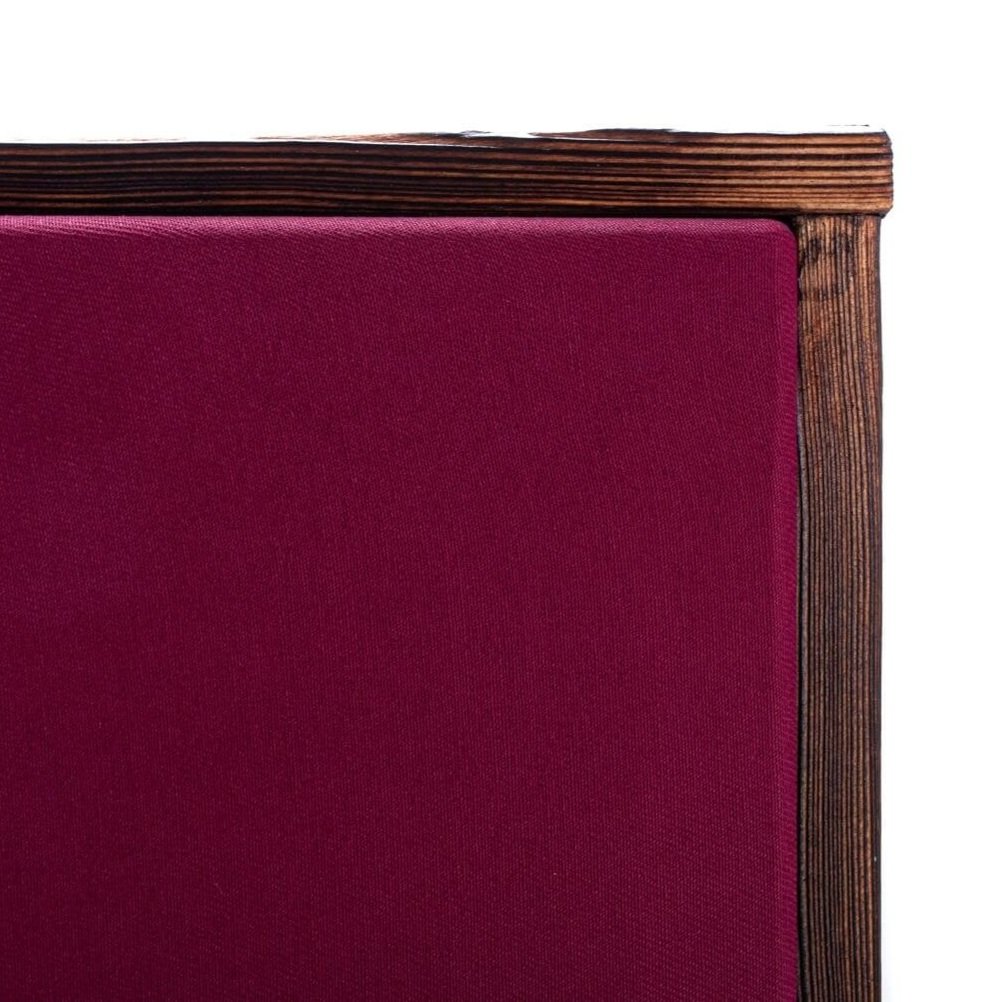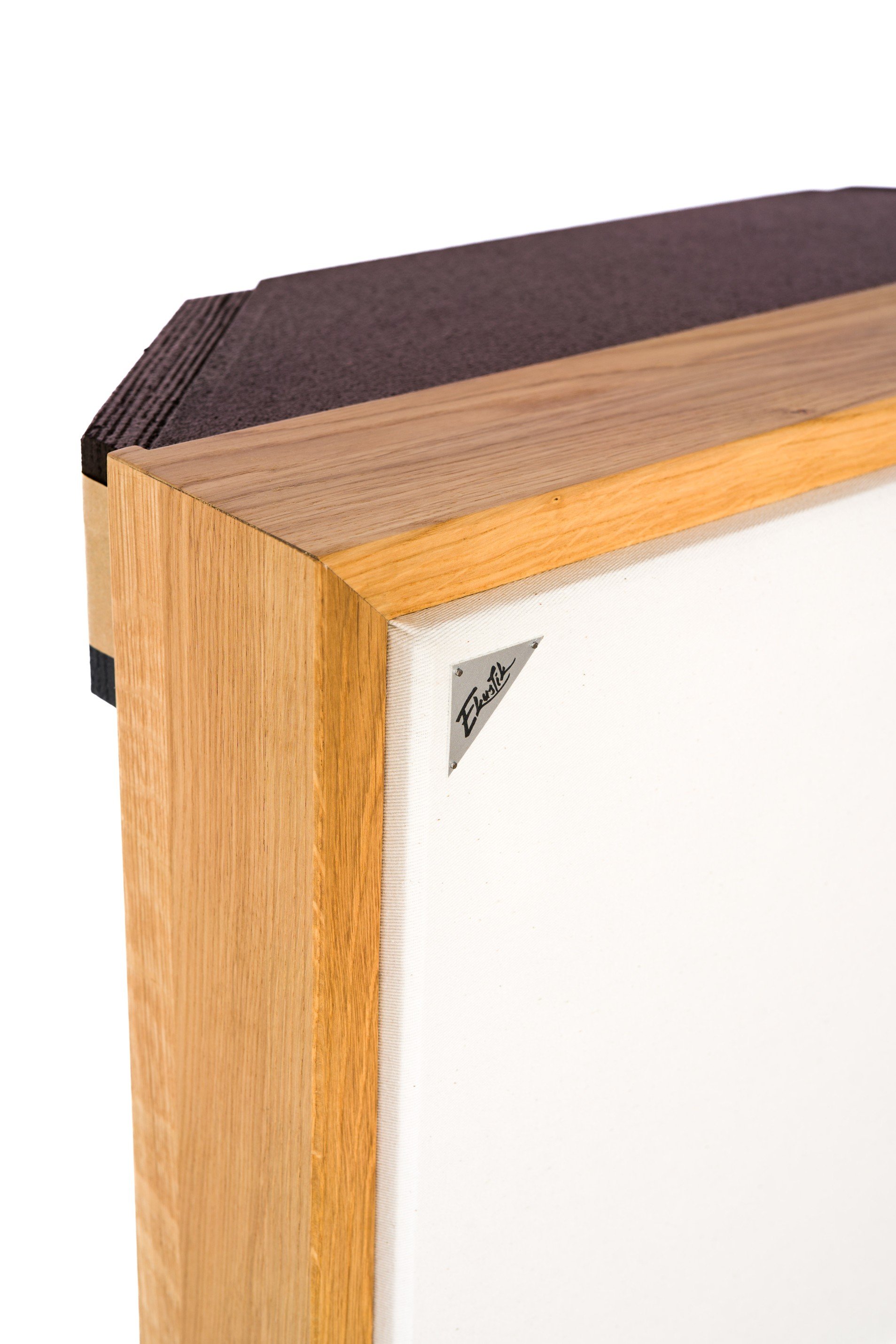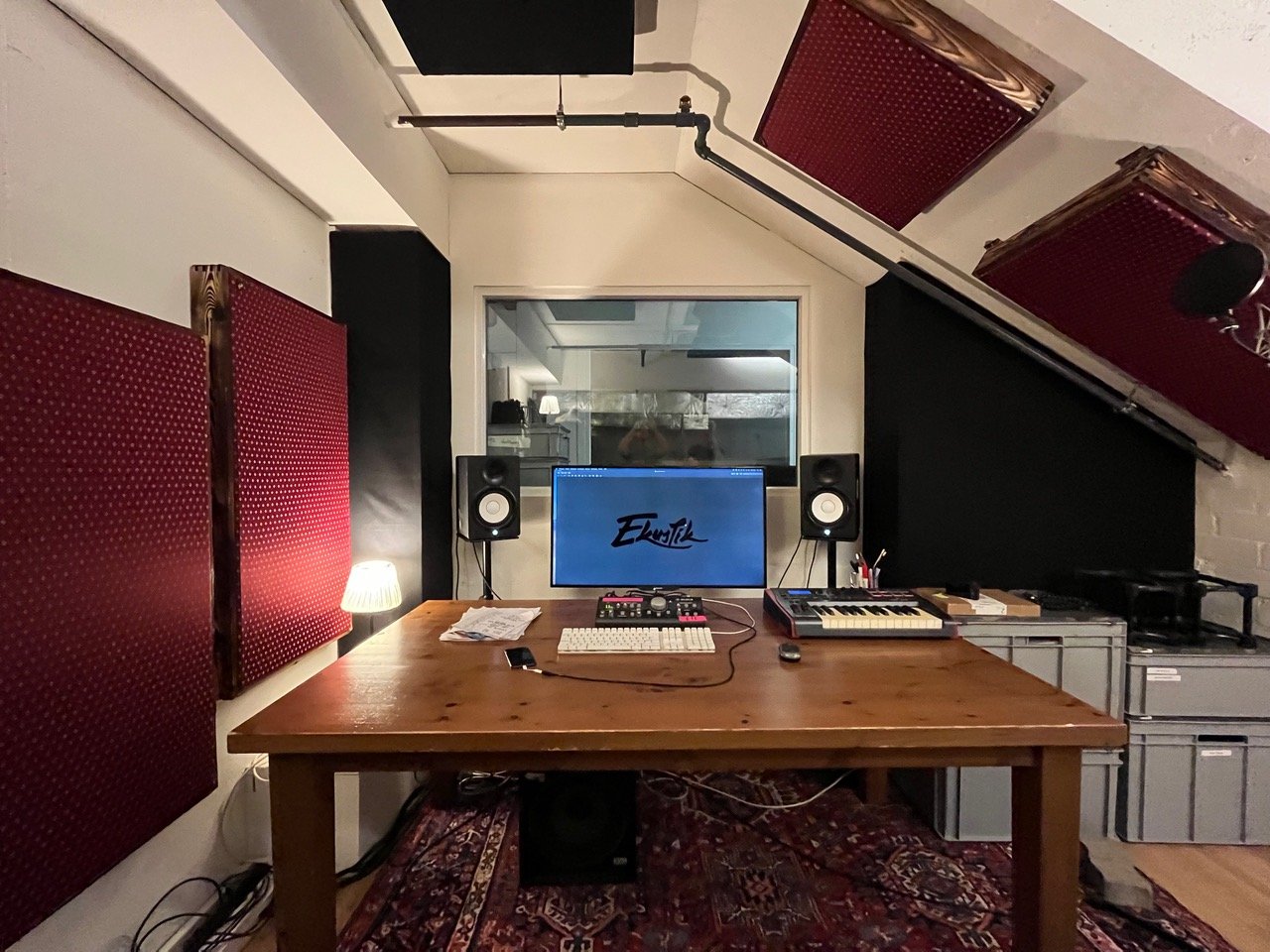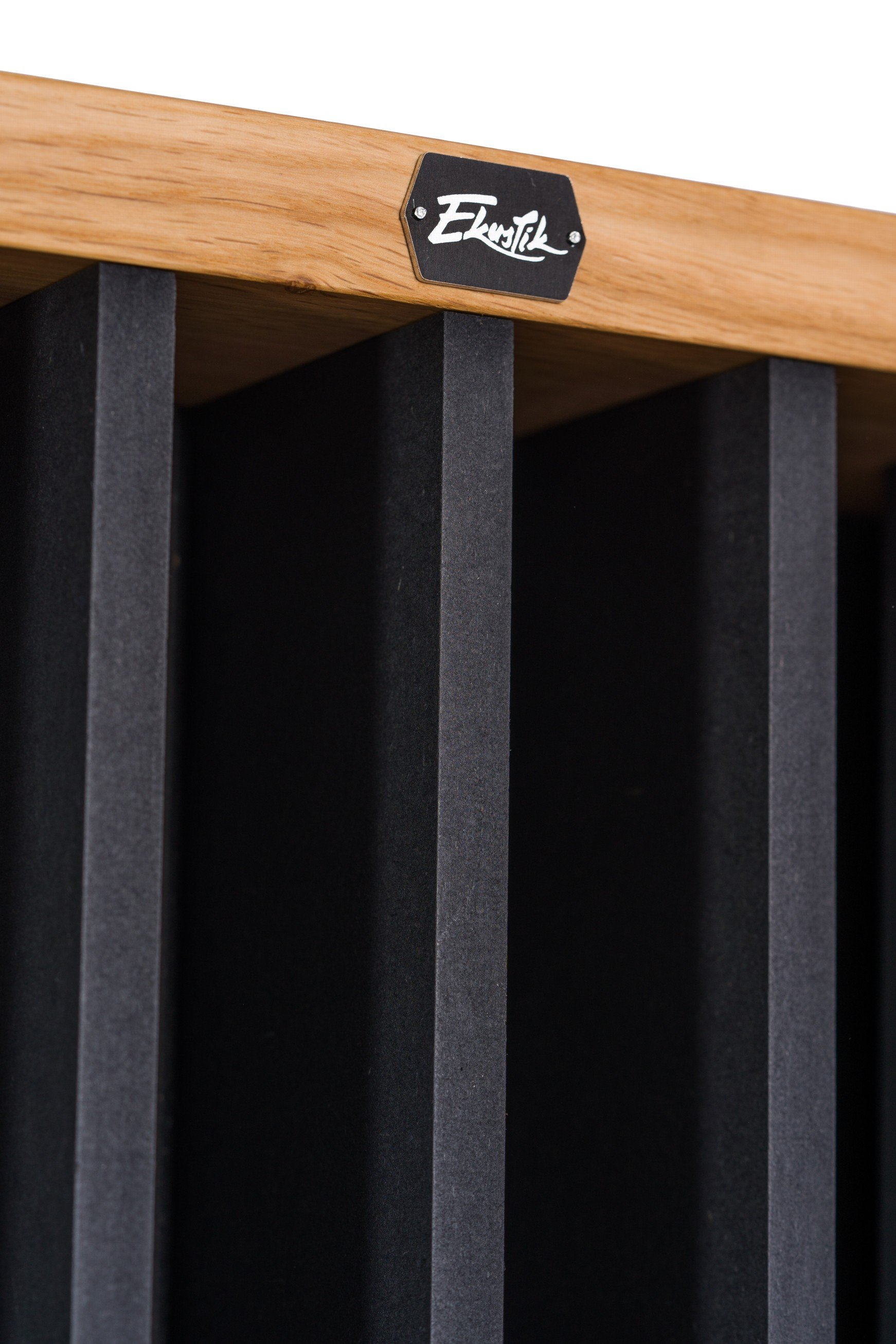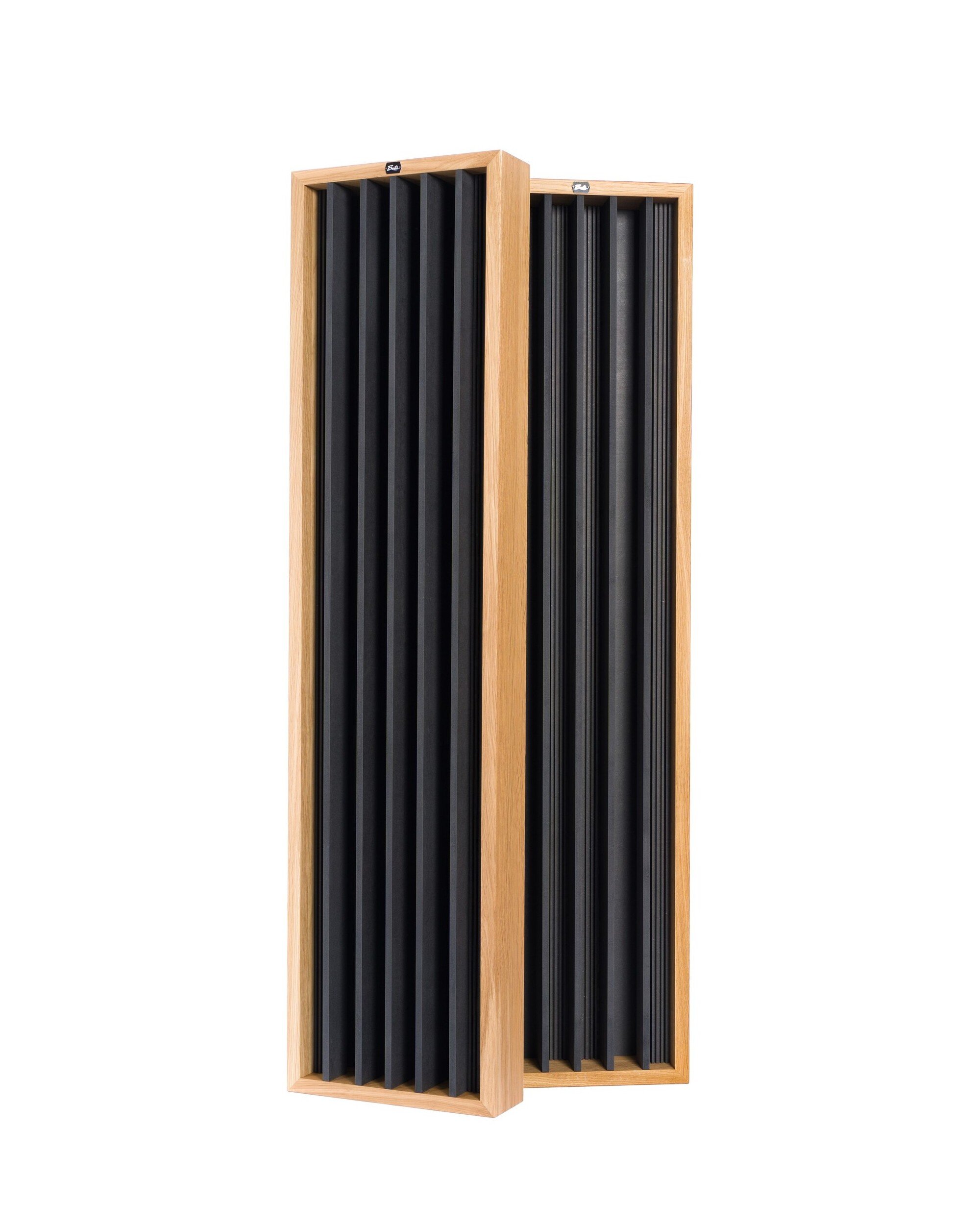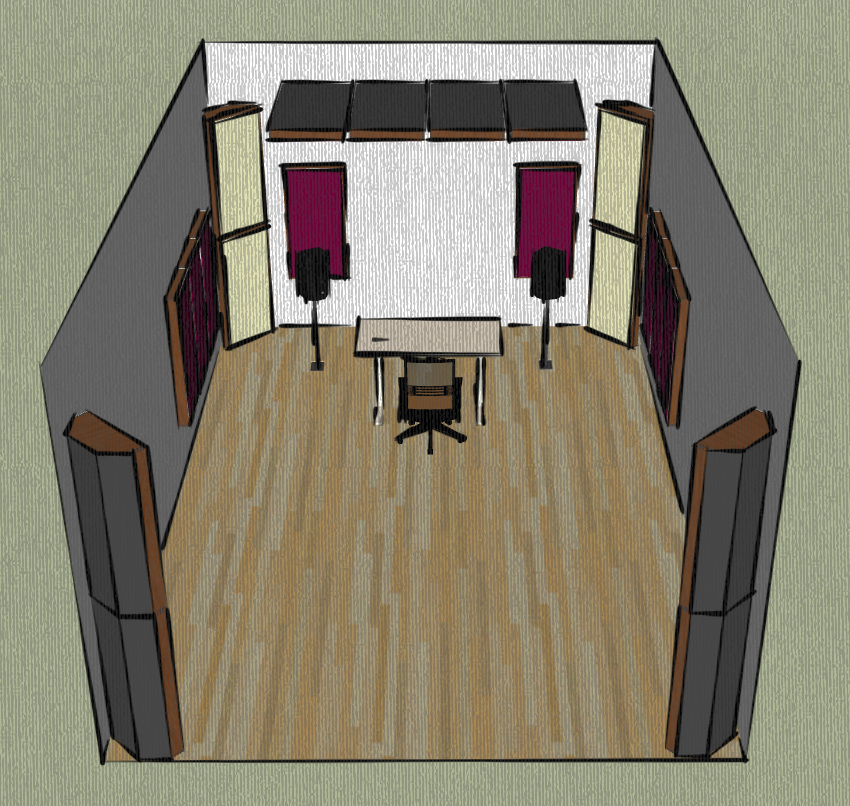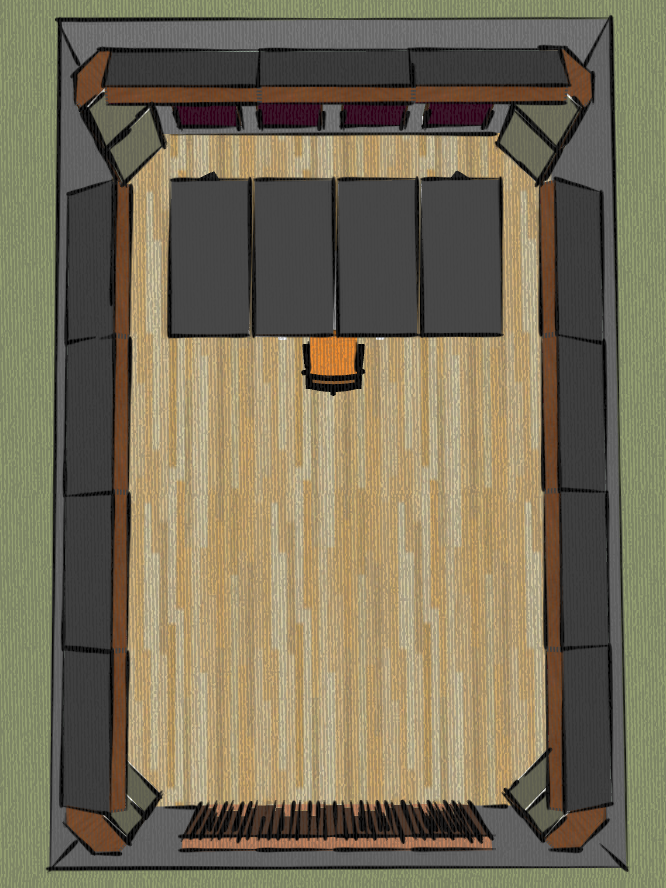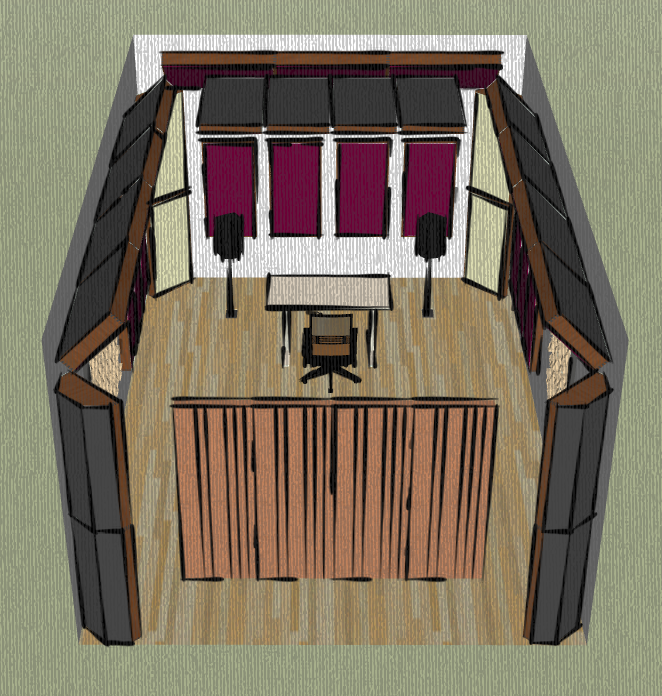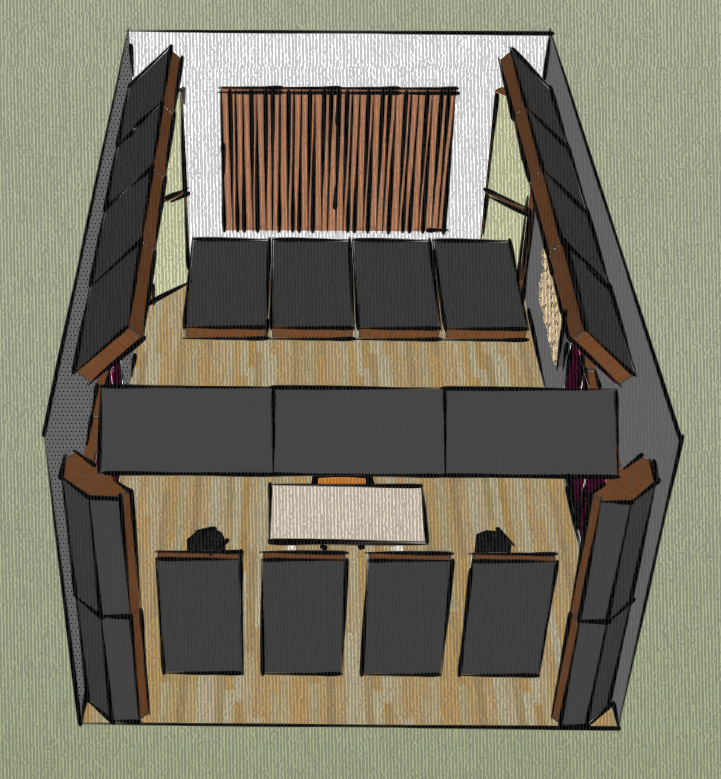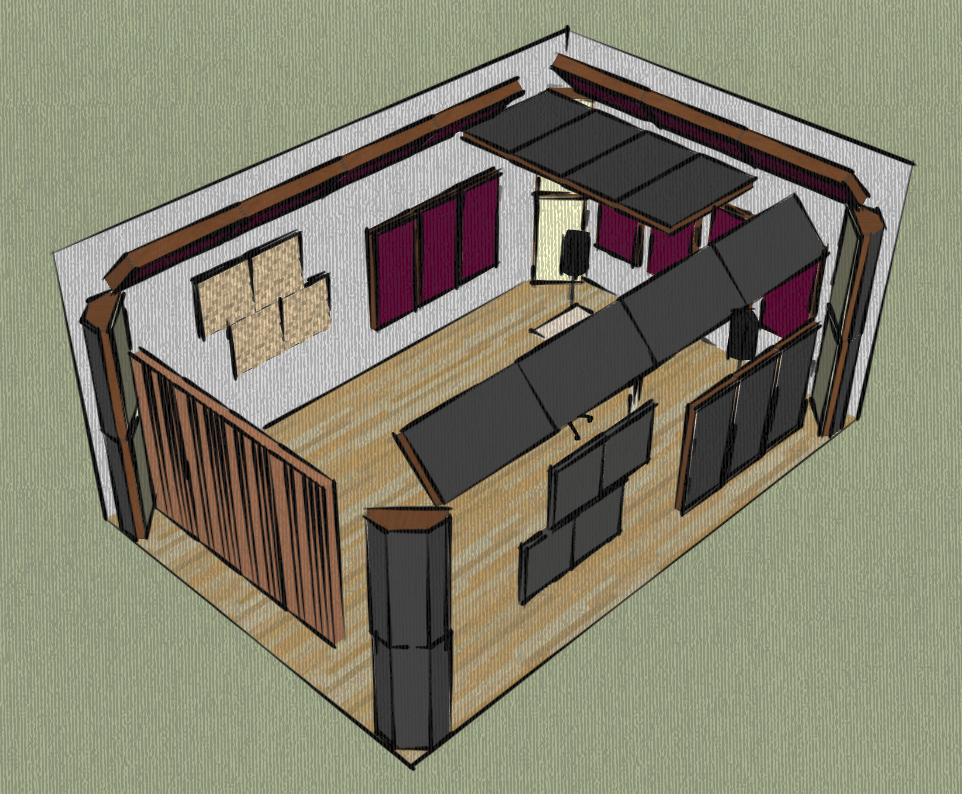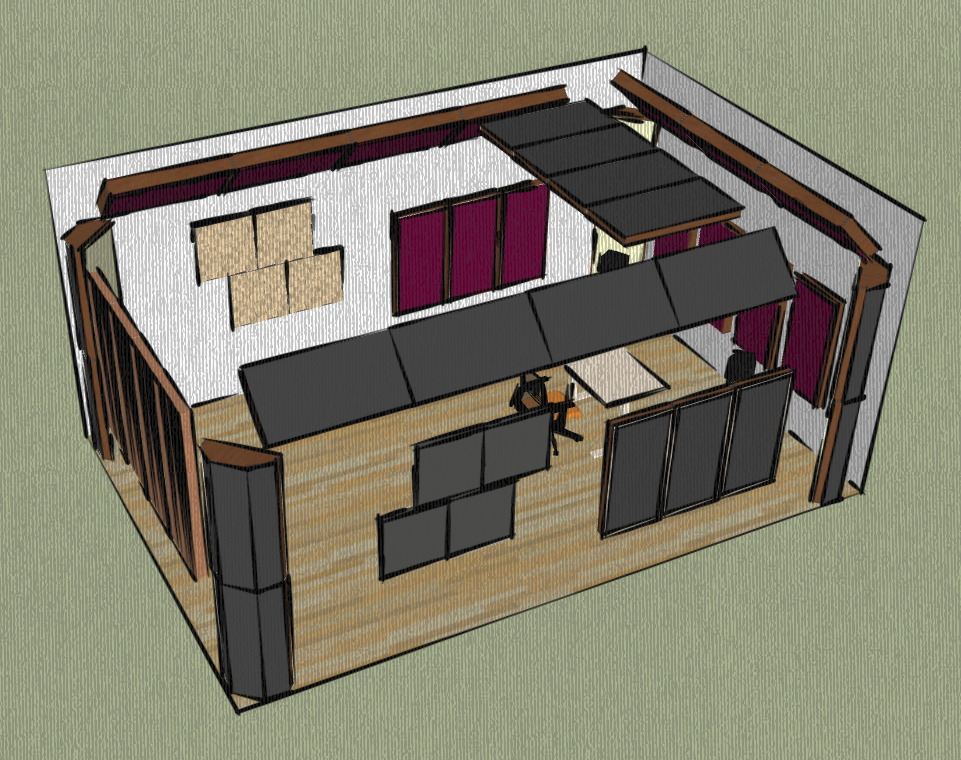Home studio: Listening position
Home studio: Speakers placement
Home studio: Use of acoustic treatment
Use of acoustic treatment
If you equip a music studio or listening room with quality speakers, it doesn’t make sense to introduce them to a lousy listening environment. For this reason, it is necessary to solve the acoustics of the room with suitable acoustic elements. Despite the importance, we still often meet people who do not care about the acoustic design of the room.
Why would someone who wants to equip a studio not care about suitable acoustics? The answer is obvious: it is an invisible problem that someone simply does not understand and it costs money to solve.
However, if you are not ready to invest in acoustic treatment, you will never achieve quality sound. Acoustic distortions haunt the entire room and affect the sound you want to hear. In this article, we will describe how to beat the distortion and how to achieve the highest quality sound. The following strategy can be applied to the acoustic solution of listening rooms or music studios, but most of this advice can also be applied to home theaters, hi-fi rooms, etc.
Ekustik acoustic treatment
We have a solution for all your acoustic needs. All our products are made by hand and thanks to our patented design, every piece is original.
Only sustainable and safe materials are used (acoustic filler is from recycled PET, not from glass or rock wool)
Woody absorbers are designed to treat the whole frequency spectrum, from 40 Hz to 10 kHz+
Example of room setting (listening / mixing music)
Below are two examples of rooms whose acoustic solution we describe further in the article. This is the most commonly used acoustic treatment in rooms for listening, mixing music, etc. To learn how the listening position and speaker locations were selected, check out our listening position and speaker placement guide.
Room 1 (left):
Slightly acoustically treated two-speaker room with basic absorption and diffusion of sound waves (typical for a home recording studio). The same arrangement is suitable for a hi-fi listening room.
The acoustic solution of this room consists of basic elements - absorbers placed on the ceiling, sidewalls, and corners. An acoustic absorber or diffuser (a more expensive variant) is located on the rear wall. This is a great starting point, to which more demanding users add additional acoustic panels, which prevent any reverberation and control the excessive liveliness of the room.
Room 2 (right):
Space suitable for mixing 5.1 surround sound using commercially available acoustic absorbers and diffusers. A similar home layout can also be used for high-end home cinema.
The acoustic absorbers are located in the same way as in the first room, but for a higher absorption effect, a larger absorption area on the ceiling and sides is used. An absorber or diffuser is used on the rear wall. In the case of a home theater, the listening position and speakers would be located closer to the back of the room, and the back wall would be more adapted to the diffusion of sound waves through the diffuser for the greater liveliness of the space.
Room acoustics software is just help, not your secret weapon!
Software programs for room acoustics analysis are a good addition to speaker settings, etc., but they are not sufficient from a practical point of view. Digital calculations usually cannot help you with the following two phenomena: long reverberation time and sound blur by the SBIR effect (sound reflections, which are manifested by inappropriate placement of the speakers to the nearest reflecting surface).
However, tackling these problems is easier than you think. All you need is basic knowledge of intelligent room layout, speaker placement, and this acoustic treatment manual.
ABSORB early reflections and create rfz
The basis of the acoustic solution is always formed by absorbers placed on the first reflection points on the walls and ceiling. Note in the previous figures that the acoustic absorbers are located on the walls between the speakers and the listening position, as well as on the ceiling.
Why? This is where the sound waves are reflected first, so it is necessary to absorb them directly here. By absorbing the reflections, you will hear only the direct sound from your speakers, not the sound that bounces off the walls.
Place Acoustic absorbers on the first points of reflection between the speaker and the listening position.
For example, if you have a limited budget or can only apply a few absorbers in your room, place them here. If the walls and ceiling were left without acoustic panels in these places, the early reflected sound waves would mix with the direct sound from the speaker and cause sound blur. The sound is then distorted, details are masked, and it is unsuitable for recording as well as listening.
Ideally, you try to create a Reflection free zone (RFZ) around the listening position so that you simply do not hear the initial reflections. This allows you to hear the direct sound from the speakers without disturbing reflections from surrounding surfaces.
Basic acoustic treatment for a room with a two-channel sound source. The first reflection points of the side wall (left and right of the listening position) and the ceiling are treated with acoustic absorbers (red panels).
The easiest and cheapest way to treat the first reflection points is to use broadband absorbers Ekustik Woody. Ideally, 15 or 10 cm thick absorbers will ensure sufficient absorption. If you don't have enough space, 5 cm deep absorbers are the absolute minimum. The deeper the panel, the thicker the absorbing layer and the more efficiently it absorbs lower frequencies.
Tip for hi-fi rooms and home theaters:
In the case of a room designed purely for listening, you will probably not want complete absorption at the first reflection points. A combination of absorption and diffusion (50/50) is more suitable in these rooms, which ensures the greater liveliness of the sound in the room. However, this variant is more costly because acoustic diffusers are generally more expensive than absorbers.
Tip for demanding users:
Let your walls disappear. Acoustic absorbers located at the first reflection points are the absolute minimum, thanks to which you will be able to create a reflection-free zone (RFZ) around your listening position. However, in a perfect studio, the entire ceiling would be a giant broadband absorber that absorbs all reflections, so it sounds as if the ceiling does not exist at all. The same can be said about the back and side wall. For this reason, it is advisable to place as many absorbers on the walls and ceiling as possible.
Basic acoustic solution in rooms with surround sound. The first reflection points of the side wall (left and right of the listening position) and the ceiling are treated with acoustic absorbers.
Low-frequency absorption
In an ideal world, the acoustics of the space would not matter, so that only clear sound coming from the speakers could be heard. That's why we generally try to make the room sound neutral when listening to sound from speakers. However, this task is not simple and we encounter the following problem: it is easy to absorb high frequencies but, difficult to shorten the reverberation time at low frequencies.
If you place too many absorbers for the middle and high frequencies in the room, but not enough for low frequencies, the resulting sound will sound strange: faint and sterile at high frequencies, sloppy and booming at low frequencies.
All small spaces without suitable acoustic treatment are haunted by bass chaos at low frequencies.
The sources of this chaos are caused by the frequency regions of the room (room modes), the position of the speakers, and any other acoustic distortion caused by the attempt of bass waves to exist in small rooms. In an acoustically untreated room, bass causes an uneven frequency response and long reverberation times at low frequencies.
How to know, this chaos also applies to you here? It's very simple: if you're in a small, acoustically untreated room - this problem affects you for sure, even if you think there's nothing wrong with the sound. In the case of an already treated room, the problem would concern you in the case of unbalanced bass frequencies that you can hear or measure.
You have two weapons at your disposal to control the basses: the correct placement of the speakers and sufficient absorption of the basses by low-frequency absorbers. Take advantage of both and you will have a great low-frequency response in your studio. For a more detailed guide to bass absorbers, visit the following article, in which we discuss them in more detail.
We place bass absorbers in the four basic corners of the room, ideally along the entire length from floor to ceiling.
Now that we know how to equip a room with acoustic absorbers, we can introduce the second most important participant in acoustic solutions - diffusers. These panels, unlike absorbers, scatter sound waves and help us reach an acoustically balanced room.
Effect of diffused sound on room acoustics
Acoustic diffusers reduce unwanted echoes and reflections by scattering sound waves in many directions. Unlike absorbers, sound diffusers keep your room lively because they do not absorb sound waves. Instead, the diffusor scatters them and spreads them around the room.
With the right combination of these elements, the best sound expression and a sound-balanced room can be achieved. The disadvantage of diffusers is usually higher acquisition costs than absorbers (it usually takes more time to produce them).
The basic use of the diffuser is recommended on the back wall if it is located at least 2-3 m behind the listening position. The ideal is a combination of corner absorbers that absorb low-frequency reflections (bass absorbers) and a diffuser in the middle of the wall that can scatter higher frequencies. This way you will achieve a great sound with a feeling of liveliness and spaciousness. If the listener is closer to the wall than 2 m (smaller room), it is recommended to place an absorber on the back wall.
In the following picture, you can see the recommended combination of absorbers and diffusers for a professional music studio. Massive absorbers in the corners (bass absorbers) and the entire rear absorption wall are added to the absorbers at the first reflection points. The diffuser is located on the back wall directly behind the listening position.
The ideal acoustic solution for a music studio. The acoustic diffuser is located behind the listening position to disperse the mid and high frequencies, while the massive bass absorbers in the corners and on the back wall absorb low frequencies.
Before placing the diffuser, it is good to think about what purpose the room will be intended for. On the back wall, diffusers are standard in almost every recording studio. On the other hand, in purely listening rooms, we often see another diffuser located on the front wall, which then creates the illusion of "extruding the walls" and greater room space (sound is not absorbed on the front wall, but reflected).
If you do not focus on clear and accurate sound, for example in home theater conditions, you can equip your room with more diffusers for the greater liveliness of the space. This is often required even in hi-fi listening rooms. In this case, start by covering the first reflecting points with absorbers and then apply diffusers to 20 to 30% of the surface area of the walls and ceiling.
Looking for balance: absorption, diffusion, and reverberation time
Finding the right balance of absorption and diffusion in your space is a science with the addition of magic. In the following section, we will describe the main rules of thumb to think about if you want to acoustically treat the room yourself. Please note that in home conditions, on average, at least 30 % of the wall area is covered with acoustic panels (room area around 30 m2).
A professional studio has walls covered with acoustic panels on at least 50% of the area.
The smaller the room, the more acoustic panels need to be used.
Start with the absorbers at the first reflection points and the bass absorbers at the corners of the room.
If possible, apply the panels to the ceiling and all walls of your room.
To prevent echoes, avoid large areas of acoustically untreated walls or ceilings (do not leave two opposite walls completely bare).
If the room is smaller or a cube, an absorber is more suitable than a diffuser on the back wall.
If possible, focus on the symmetry of the left and right sidewalls.
You can place a small rug under the listening position, where it absorbs the first reflections from the floor. Carpet for the entire floor is not recommended because it absorbs high frequencies more than low frequencies.
The combination of strategic speaker placement and acoustic panels will enhance your listening experience.
Intelligent listening position selection, correct speaker placement, and sufficient bass absorption will give you balanced low frequencies.
It is ideal to perform acoustic measurements after equipping the room so that you can measure the reverberation time and adjust the absorption/diffusion coverage as needed.
You always start with absorption to create a RFZ.
Reverberation time
The reverberation time is the time required for the sound pressure level to drop by 60 dB, measured in seconds. We use it to measure the so-called liveliness of the space and the abbreviation stands as RT60.
However, in small rooms (as most listeners/music studios have) it is usually very hard to measure how long it takes for the sound pressure to drop by 60 dB. Therefore, in the acoustics of small rooms, we often encounter the measurement of the reverberation time of 30 dB (RT30). You can easily measure the reverberation time using various microphones, sound level meters, software, etc. (just download one of the many apps to your phone).
What should be the liveliness of the sound?
The recommended reverberation time varies based on functional use, so in the case of a music studio in a smaller room (up to approx. 30 m2) it is recommended to keep the RT30 reverberation time between 0.1–0.4 seconds (between 250 Hz and 4 kHz).
The smaller the room, the lower the value we try to achieve. A longer reverberation time means that space will be more lively and therefore less suitable for music recording. For example, we try to achieve more liveliness in music rehearsal rooms or home theaters, where a slightly longer reverberation time is desirable (RT30 0.2-0.5 seconds).
The best music studios in the world are acoustically treated to keep the RT30 reverberation time below 0.15 seconds.
What sound should you expect with an acoustic treatment?
The acoustic treatment of the room will ensure a perfect connection with the music. Even in a home basement studio, if you achieve a good quality sound, you will be on the same wave with the music much like in the professional facilities.
Experience a new level of depth and clarity in your recordings, so you can hear sharp detail and full dynamic range in high-quality sound. If you are a hi-fi audiophile, you will finally hear the real sound of your speakers. You will be able to close your eyes and transfer yourself to the room where the song was recorded.
In short, if you treat your room according to the rules listed here, your ears will thank you every day.
Putting it all together
In the following example, you can see how absorbers, bass absorbers, and diffusers form the whole acoustic solution of a music studio. All the principles described in this guide are applied here. Broadband absorbers at the first reflection points, bass absorbers at the main corners, and a diffuser at the rear wall. If you could equip your home studio to a similar level, you would be an absolute winner of the fight with acoustics.
The diffuser is a relatively expensive piece, so it can be replaced by an acoustic absorber, such as an acoustic picture with its own print. It's not an ideal solution, but it's still better than leaving the whole wall bare.
Absorbers and diffusers cover more than 50% of the wall area in professional studios.
Advanced solution
Full treatment
And that was it. We hope this helps you with your studio setup and don’t hesitate to show us your projects!

